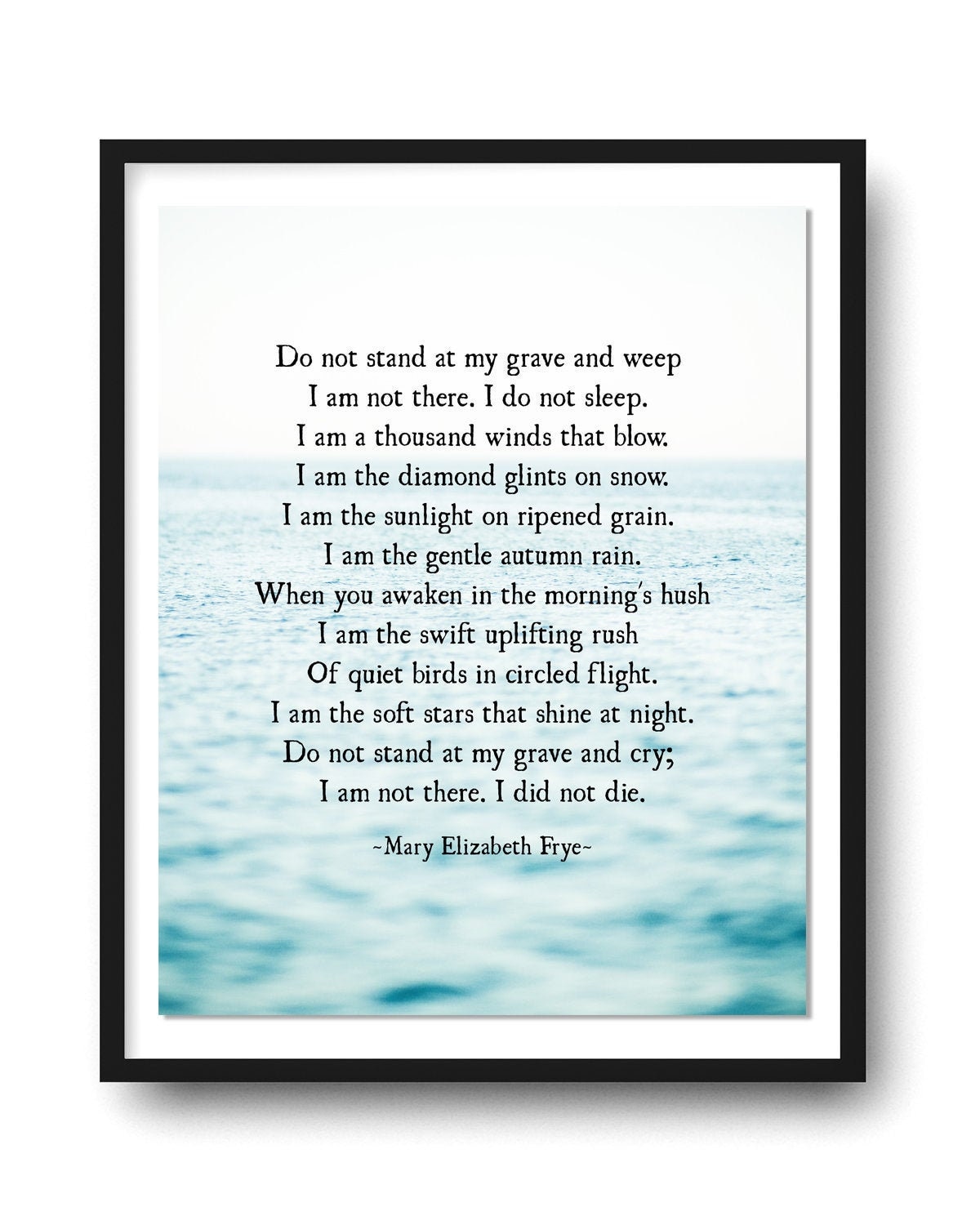
Refrain from personal attacks, threats, bigotry, and other forms of harassment.

Please post Frozen or /r/Frozen community related stuff. Join the Arendelle Kingdom Discord Server!

Hope you liked this poem./r/Frozen is the subreddit for Disney's Frozen, its sequel Frozen 2, the short film Frozen Fever, the holiday featurette Olaf's Frozen Adventure and and all other associated sequels and spinoffs.

This was a beautiful poem and one that seems highly relevant in the present scenario, as death tolls from around the world rise in a staggering manner. The inclusion of nature to capture such profound notions is also a widely loved feature of this poem. Poetic devices used include, hyperbole, imagery, rhyme and metaphor. The clear and empathetic claim that he/she is not there in the ground, but is alive is aimed at setting the mourner at peace. These lines would imply death being a new beginning, rather than an end, as is popularly believed. The poem ends on a firm note, with the reader being told to not weep, for the speaker has not died. These lines imply that a dead person never truly leaves us and is ever present in the soothing elements of nature. Apart from being there in the morning, the speaker says he/she will also be present at night in the form of the ‘ soft stars‘. The speaker further continues to soothe the reader letting them know that they’ll be there every morning, the mourner greets a new day, alive in ‘ the swift uprush of quiet birds‘.

The descriptive phrases here, especially ‘ diamond glint‘ and ‘ ripened grain‘ add a rich element of imagery and structure to the poem. In the subsequent lines, the dead person is comforting the mourner, assuring them that rather than being dead, and in a grave, they are very much alive and present in every bit of nature. Widely read at funerals, this poem is aimed at soothing those who are mourning the loss of a loved one, with the dead person assuring them that they are not confined to their graves. Often noted for the authoritative tone evident in the first few lines, this poem starts with the speaker dictating the reader to not weep at his/her grave for they are not there in the grave. From Goodreads, ‘The poem for which she became famous was originally composed on a brown paper shopping bag, and was reportedly inspired by the story of a young Jewish girl, Margaret Schwarzkopf, who had been staying with the Frye household and had been unable to visit her dying mother in Germany because of anti-Semitic unrest.’ Written in 1932, this poem was written from the perspective of a person beyond the grave, someone who was well aware of what it felt like to die.


 0 kommentar(er)
0 kommentar(er)
